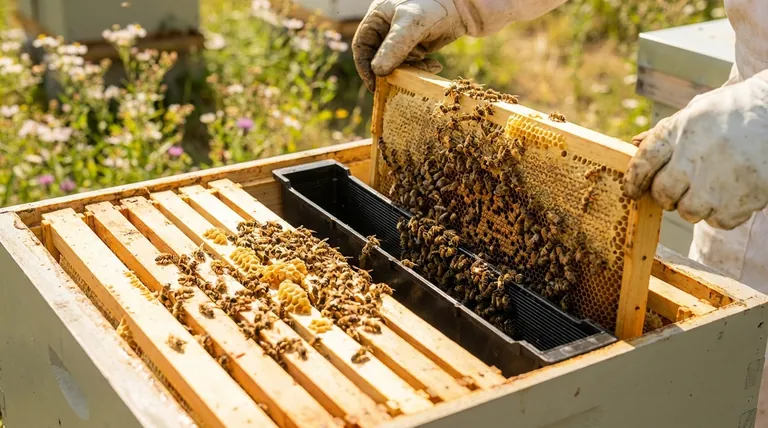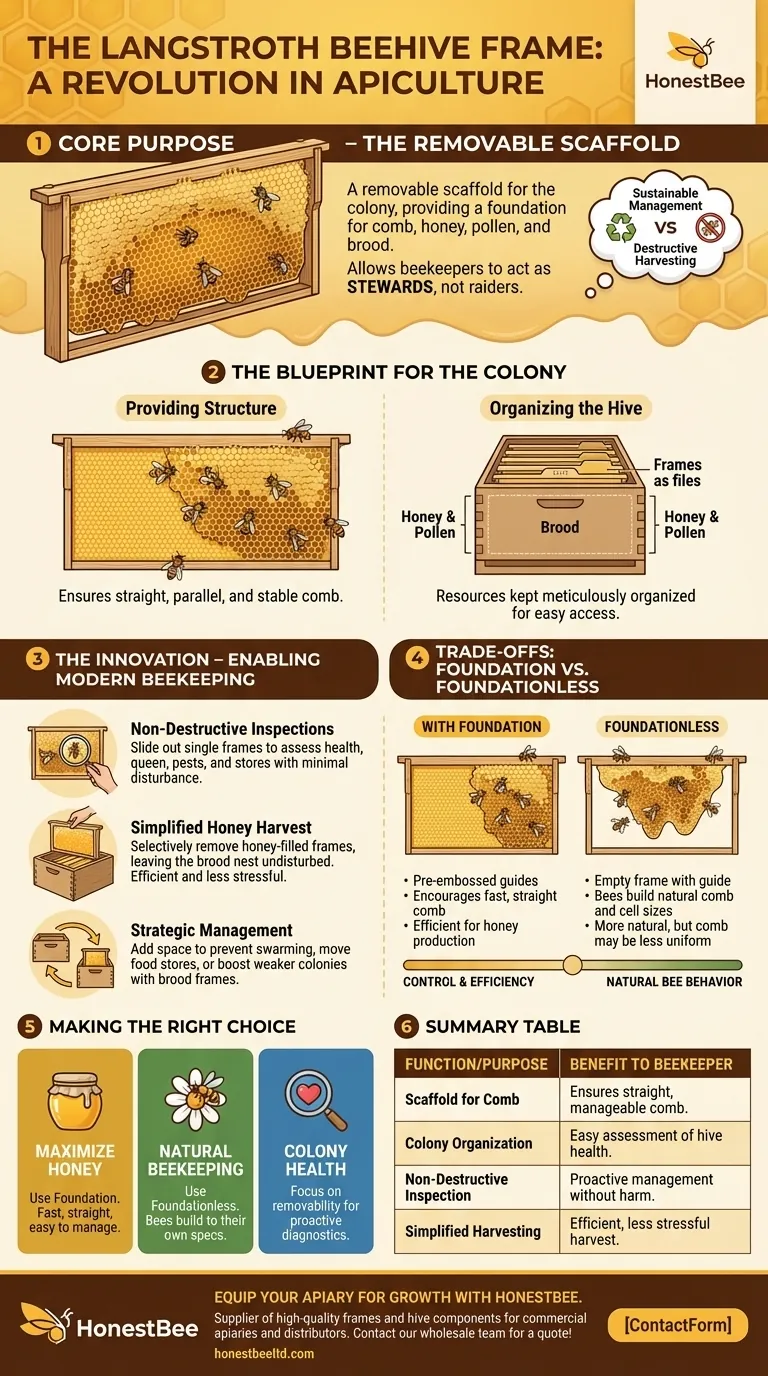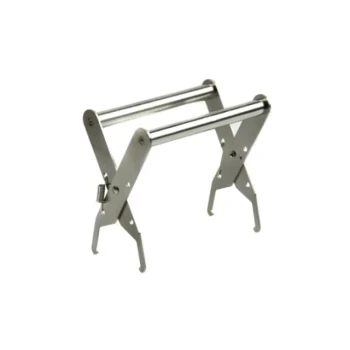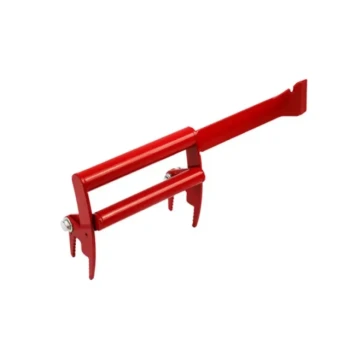At its core, a frame in a Langstroth beehive is a removable scaffold for the colony. This simple, rectangular structure serves as the foundation for bees to build their wax comb, store honey and pollen, and raise their young (brood). While it provides essential internal structure, its revolutionary purpose is to allow beekeepers to inspect, manage, and harvest from the hive without destroying the colony.
The invention of the removable frame transformed beekeeping from a practice of destructive harvesting into one of sustainable colony management. It is the key component that allows a beekeeper to act as a steward, rather than a raider, of the hive.

The Frame as a Blueprint for the Colony
Before the Langstroth hive, beekeepers often had to destroy the bees' natural comb—and sometimes the colony itself—to harvest honey. The frame system introduced order and accessibility.
Providing a Stable Structure for Comb
Frames provide a clean, predictable plane for bees to build upon. This ensures the comb is built in straight, parallel lines within the confines of the frame.
This organized structure is incredibly stable and prevents the bees from attaching comb to the hive walls, which would make removal impossible.
Organizing the Hive's Interior
Think of the hive body as a filing cabinet and the frames as the individual files. This system allows the beekeeper—and the bees—to keep the hive's resources meticulously organized.
Bees naturally arrange their resources this way. Frames with brood are typically kept in the warm center of the hive, while frames with honey and pollen are placed on the outer edges to act as insulation and food reserves.
The True Innovation: Enabling Modern Beekeeping
The ability to easily remove and replace each frame individually is the defining feature of the Langstroth hive and the foundation of modern apiculture.
Facilitating Non-Destructive Inspections
A beekeeper can slide out a single frame to assess the health of the colony. This allows them to check the queen's egg-laying pattern, look for signs of pests or disease, and monitor food stores.
These inspections are critical for proactive hive management and can be done with minimal disturbance to the rest of the colony.
Simplifying Honey Harvest
When bees have filled a frame with cured honey and capped it with wax, the beekeeper can remove that specific frame. The rest of the hive, particularly the brood nest, remains completely undisturbed.
This selective process is efficient and far less stressful for the bees compared to older, more destructive methods.
Allowing for Strategic Hive Management
The modularity of frames gives the beekeeper immense control. Empty frames can be added to create more space and prevent swarming. Frames of honey can be moved to ensure a colony has enough food for winter. A strong colony's frame of brood can even be given to a weaker one to boost its population.
Understanding the Trade-offs: Foundation vs. Foundationless
A key decision for any beekeeper is what to put inside the frames. This choice involves a significant trade-off between control and natural bee behavior.
The Role of Foundation
Most beekeepers use foundation—a sheet of wax or plastic embossed with the hexagonal pattern of honeycomb.
This foundation provides a guide, encouraging bees to build straight, uniform comb quickly. This is highly efficient for honey production and makes comb management predictable.
The Foundationless Alternative
Some beekeepers prefer foundationless frames, which are empty except for a small guide strip. This allows the bees to build their comb entirely on their own, to whatever cell size they naturally prefer.
While this is considered a more natural approach, it can lead to less uniform or cross-built comb, which can make hive inspections more difficult.
Making the Right Choice for Your Goal
The purpose of the frame is consistent, but how you use it depends entirely on your beekeeping philosophy and objectives.
- If your primary focus is maximizing honey production and efficiency: Use frames with foundation to ensure fast, straight comb construction that is easy to manage and harvest.
- If your primary focus is natural beekeeping: Use foundationless frames to allow your bees to build comb to their own specifications and cell sizes.
- If your primary focus is colony health and inspection: Recognize that the removability of any frame—foundation or not—is your most powerful diagnostic tool for understanding and supporting your bees.
Ultimately, the frame is the simple yet brilliant interface that allows us to work alongside the bees, managing their remarkable productivity with minimal intrusion.
Summary Table:
| Function | Purpose | Benefit to Beekeeper |
|---|---|---|
| Scaffold for Comb | Provides a foundation for bees to build wax comb. | Ensures straight, manageable comb within the hive. |
| Colony Organization | Helps bees organize brood, honey, and pollen. | Allows for easy assessment of hive health and resources. |
| Non-Destructive Inspection | Enables individual frame removal. | Facilitates proactive hive management without harming the colony. |
| Simplified Harvesting | Allows selective removal of honey-filled frames. | Makes honey harvesting efficient and less stressful for bees. |
Ready to build a more productive and manageable apiary?
The right equipment is the foundation of successful beekeeping. At HONESTBEE, we supply commercial apiaries and beekeeping equipment distributors with high-quality, durable frames and essential hive components through our wholesale-focused operations. Let us help you equip your operation for sustainable growth and maximum honey production.
Contact our wholesale team today to discuss your needs and get a quote!
Visual Guide

Related Products
- Professional In-Hive Bee Feeder HONESTBEE Frame for Beekeeping
- Assembled Wooden Bee Frames with Beeswax Foundation Ready to Use by HONESTBEE
- HONESTBEE Wired and Assembled Wooden Bee Frames Foundation for a Thriving Hive
- Plastic Bee Frame Beekeeping Hive Frames for Wholesale
- Stainless Steel 9 Frame Hive Spacer Durable Precise for Commercial Beekeeping
People Also Ask
- Are frame feeders good? Maximize Your Hive's Health with the Right Feeding Strategy
- What is a frame in a Langstroth style beehive? The Key to Modern, Manageable Beekeeping
- Where should a bee feeder be placed? The Essential Guide to Hive Safety & Efficiency
- What are the standard dimensions for Langstroth beehive frames? Choose the Right Size for Your Apiary
- How do you feed bees outside the hive? Understanding the Risks and Safe Alternatives



















